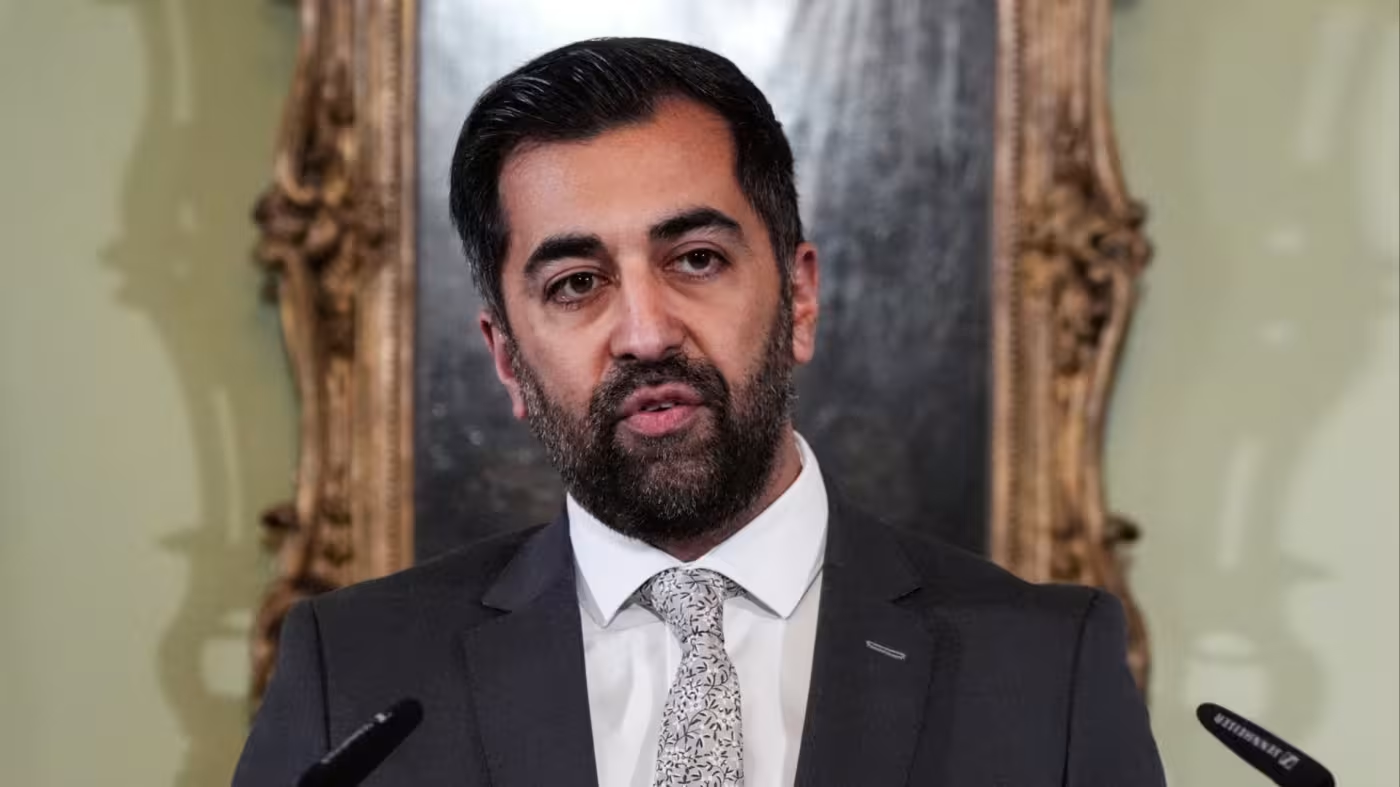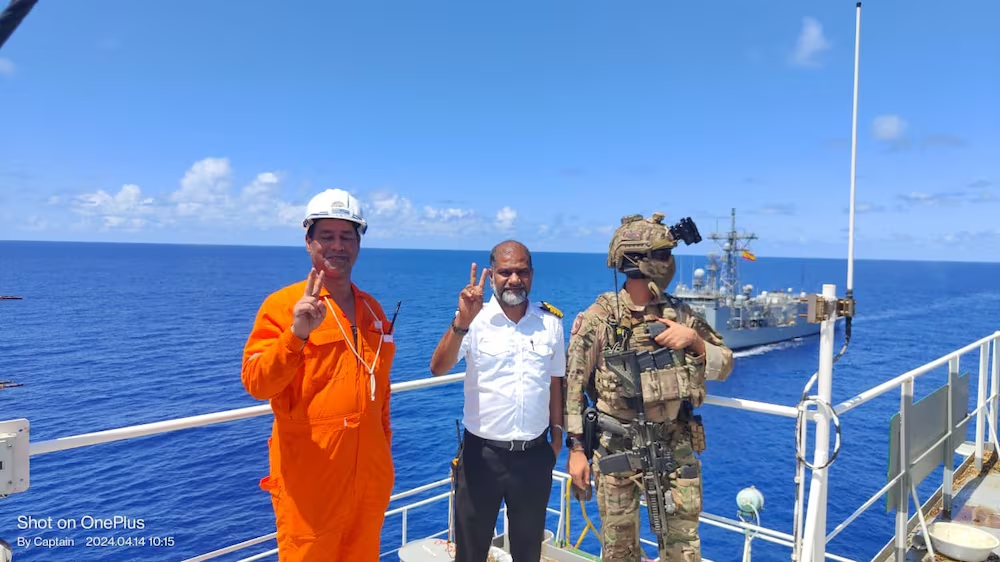By: Dhaka Trıbune
The hijacking of MV Abdullah, the Bangladeshi-flagged bulk carrier and its crew of 23 by Somali pirates on March 12, while on a voyage from Maputo in Mozambique to Al Hamriyah in UAE, has highlighted several matters.
One is the uptick of piracy off the coast of eastern Africa in the wake of the Israel-Palestine war of rage and revenge since October 2023.
This adds to the already fraught exercise of navigating the waters off the coast of Yemen and the southern aspect of the Red Sea. Here, Houthi rebels have almost at will attacked and threatened the shipping of any country seen as allying with Israel, or transporting goods to or from Israeli ports. This has led to a general scramble for naval deployment and back-channel diplomacy with any and every country and connection perceived to have leverage with the Houthis and their sponsors.
A related matter is security: Who will provide it for this busiest of shipping lanes that skirt and criss-cross the Arabian Sea and feed the Suez Canal? NATO or Asian navies and coast guards? India? China? Or a combination, depending on the comfort level of a shipper and parent country with a particular country or group — or sub-group?
As the MV Abdullah episode demonstrates, it’s all enormously complex.
While tortuous West Asian politics has upped the security and shipping risk in the northern and western aspects of the Indian Ocean rim, the resurgence of piracy in this area — almost certainly on account of a chaos-triggered opportunity presented by the Houthis and their Persian Gulf patrons — has muddied matters some more.
The International Maritime Bureau, a division of London-based International Chamber of Commerce, in its “2023 Annual IMB Piracy and Armed Robbery Report” has flagged this development. Put together by the organization’s Piracy Reporting Centre in Kuala Lumpur, the report noted an incident on December 14, 2023: “ … (T)he first successful hijacking of a vessel off the coast of Somalia since 2017” a bulk carrier was boarded and hijacked by pirates believed to be Somali pirates at a point about 700 nautical miles (or about 1,300km) East of Bosaso in Somalia, right on the so-called Horn of Africa. That was the Bulgarian-owned bulk carrier MV Ruen, flying the Maltese flag. There were also reports of the subsequent hijacking of two “dhows” — which are often used as “mother ships” for staging attacks and hijacking.
As the MV Abdullah episode demonstrates, it’s all enormously complex
Describing it all as “a cause for concern,” IMB Director Michael Howlett “once again” called for “all masters and vessel owners to continue following the recommendations and reporting procedures as per the latest version of the Best Management Practices.” Howlett spoke of the mid-December hijacking as a demonstration of “continued capabilities” of Somali pirates. The annual report was released on January 11, just weeks before the hijacking of MV Abdullah.
The track of the vessel on sites that monitor global shipping tells a poignant story. One such shows the vessel’s journey from Krishnapatnam port north of Chennai to Hambantota in southern Sri Lanka to Maputo and then, en route to Al Hamriyah in Dubai. MV Abdullah was on a heading of 37.8 degrees, cruising at just under 10 knots, the last reported position on that particular site.
IMB’s Piracy Tracker offers more poignant detail including when the vessel’s SSAS, or ship security alarm system, was activated, indicating that MV Abdullah was being threatened, or “compromised”:
Attack ID: 030-24 Sitrep: 12.03.2024: 0853 UTC: Posn: 01:27N – 054:53E, Around 550nm East of Mogadishu, Somalia.
A bulk carrier underway was attacked and hijacked by armed pirates in small boats. The ship’s SSAS was activated and all 23 crew members were taken hostage by the pirates, who had full control of the ship. The pirates then sailed the ship and anchored it at the Somali coast.
Now what do the ship’s owners, an arm of KSRM Group of Bangladesh, do? As they did in end-2010 and early 2011, when a ship owned by the group was hijacked by Somali pirates and the crew subsequently released upon payment of a ransom, they opted to negotiate with the hijackers. And opted out of a reported offer from India for rescue even though the offer was made on the back of spectacular success.
Some precedence
Over March 15-16, a complement of Indian Navy ships, including INS Kolkata — a guided-missile destroyer, patrol aircraft, and marine commandos airdropped from a C-17 transport — interdicted and freed MV Ruen, the ship hijacked in December. The operation freed 17 crew and bagged 35 Somali pirates.
On March 29, a tag team of an Indian navy patrol ship and a guided-missile frigate intercepted an Iranian fishing trawler about 170km southwest of Socotra, an archipelago east of Aden and not far from the tip of the Horn — the tip of Somalia. They arrested nine Somali pirates and freed 23 Pakistani crew.
The option to negotiate is of course the prerogative of the owners, and it brings into focus the grey areas that have governed the hijacking business in general and the Somali hijacking industry in particular. There’s a history to it.
From about 2007 onwards, over the following five years, piracy rapidly coalesced into an organized industry — a time this columnist began to track piracy in the Indian Ocean Region.
Research pointed to a seamless method of pirates reaching ship-owners, and funds in cash – ransom — finding its way to beneficiaries. Lifestyles led by pirate-lords in sanctuaries along the Somali coast became the stuff of legend. There was talk of ransom money fuelling investment in several East African countries and pushing up real-estate prices in their capital cities and resorts.
Equally intriguing was the manner in which acts of piracy were believed to be underwritten by financiers across continents and profits from ransom then inequitably shared along the food-chain, as it were, from such financiers down to impoverished Somalis — the actual hijackers. There were also specific security concerns — and not only for India — from such organized crime that included money-laundering and counterfeit currency; and, also, included Al-Qaeda derivatives and splinters, especially in the radical Islamist-controlled parts of southern Somalia and Yemen, that were suspected of using piracy to generate funds and followers.
A zero-sum game
At any rate negotiations appear to seamlessly find strands in financial and regional hubs, such as London, Singapore, Dubai, and several other places, with ransom payments subsequently arriving and disappearing, courtesy of well-connected laundromats, as it were, for profitable scores in this zero-sum game.
Among other things, it led to a flurry of anti-piracy conferences across Asia and Europe. India began to push hard, especially with the expansion in 2011 of the area at risk from piracy. As I wrote at the time, this area grew from the 65th meridian east — a line on the map that extends south from the Balochistan region of Pakistan into the Arabian Sea — to the 78th meridian east, which covers the entire west coast of India; and, effectively, covers the sea lanes that travel to and skirt Sri Lanka, along which moves a vast chunk of Indian and global merchant traffic; including Bangladeshi merchant traffic.
Research pointed to a seamless method of pirates reaching ship-owners, and funds in cash finding its way to beneficiaries
It was also the time India’s navy massively stepped up its patrolling and interdiction activities in the Arabian Sea. It directly participated in patrolling operations off Somalia as part of a multi-national task force. India had deployed ships with marine commandos and helicopters since 2008. By 2012 the navy had escorted more than 2,000 ships along the high-risk corridor (the International Recommended Transit Corridor, which was sometimes referred to as International Recognized Transit Corridor) in the Gulf of Aden — about a tenth of such ships flew the Indian flag.
Alongside preventing dozens of acts of piracy, this helped India’s navy boost its “blue water” capabilities for the strategic projection of force across the Indian Ocean area, also designed to offset China’s ingress. An anti-piracy bill was introduced in India’s parliament.
After several years of being stalled, Somali pirates have again begun to score. Then as now, three major concerns remain — concerns now grown to include Bangladesh, with its growing trade and a growing shipping and marine industry.
One is the threat to South Asian-owned shipping, South Asian cargoes, and South Asian crews. Increased insurance costs for shipping, cargo, and personnel travelling through high-risk corridors remains a corollary.
The second factor is how to deal with piracy and hostage-taking on the high seas, which remains a combination of preventive naval reach, prosecutorial legal reach, and geo-political reach. Altogether, a matter of multinational partnership.
The third factor, with the evident resumption of major piracy in the north-western Arabian Sea, remains the squeezing of the financial funnel, and slowing of the growth of the industry of piracy that rides on deliberate investment and a transnational, trans-causal sharing of profits, both monetary and political.


























